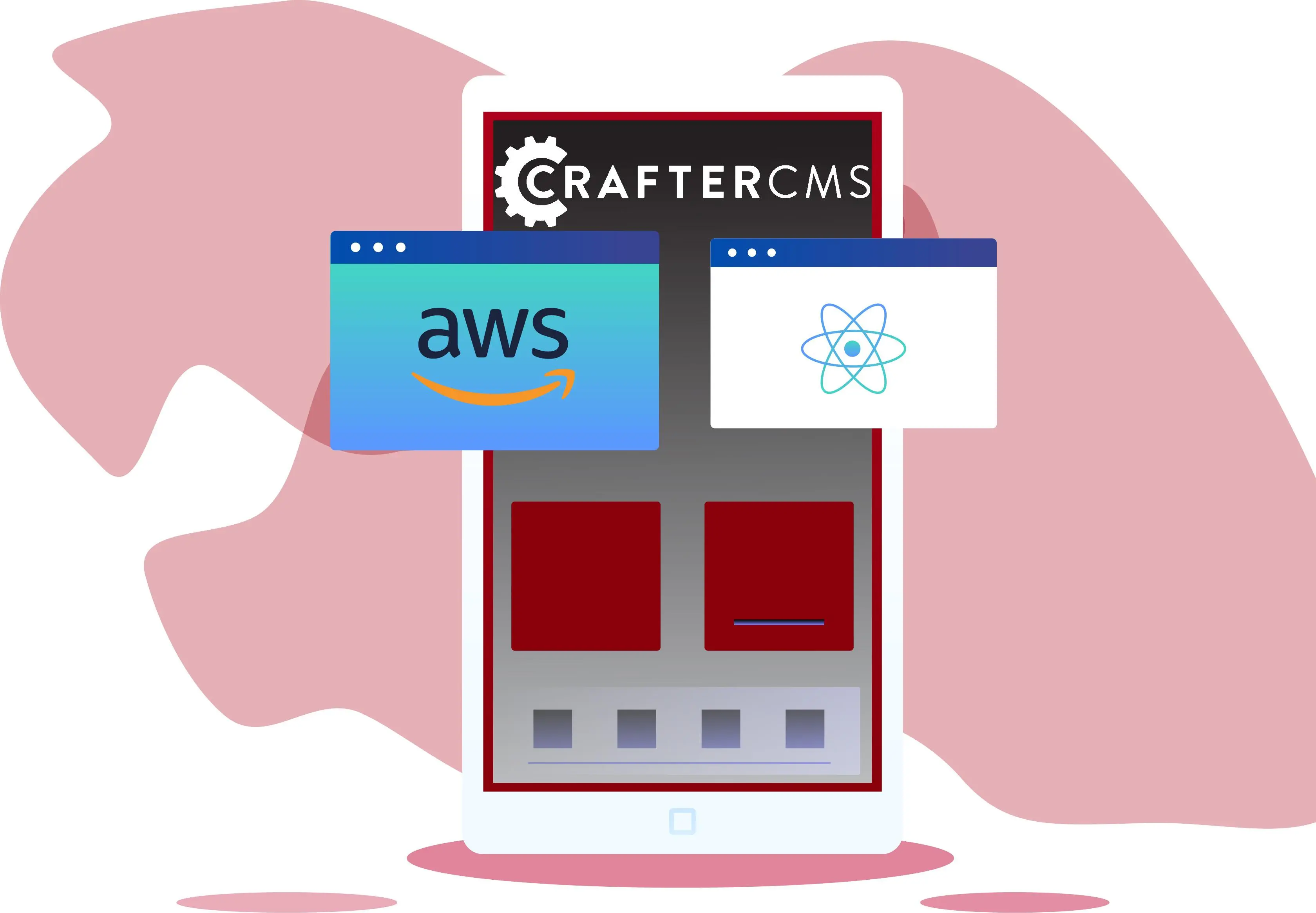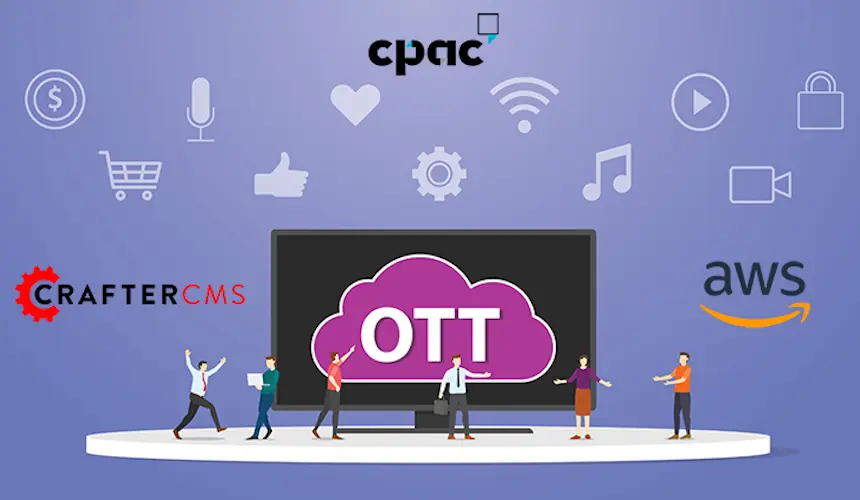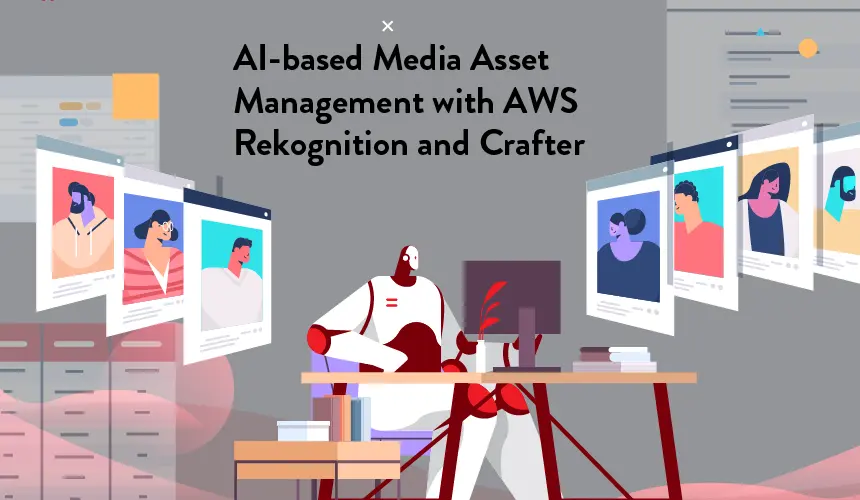React on AWS: Developing a React App on AWS with CrafterCMS

Sara Williams

With users demanding better experiences across the web, businesses that want to succeed have to be open to delivering best-in-class applications. According to a 2020 Walker study, 86% of customers will pay more for a better digital experience. Similarly, businesses with a higher focus on improving customer experiences generate an increase of 80% in revenue.
To achieve this, organizations must develop applications using the best and most innovative tools available. That means taking advantage of solutions such as React, AWS, and a headless CMS like Crafter to deliver exceptional digital experiences. With React, you can achieve faster web development and use fewer coding resources.
In this article, you’ll learn about building a React application on AWS with CrafterCMS.
What Is React (And Why Is It The Best For Frontend Development)?
React is an open-source JavaScript library for frontend web application development. To put it simply, React helps you quickly create web apps with rich user interfaces. React was released to the public in 2015 by Facebook. It has grown to become one of the most used frontend frameworks for web developers. According to a 2021 StackOverflow survey, more than 40% of developers use React to develop their websites.
One of the best features of React is that it is a component-based library. These components are written in JSX, which resembles the HTML tags that are already familiar to frontend developers and designers. In addition to that, React provides you with a Virtual DOM, which is a virtual representation of the actual DOM.
With its component-based system, React makes it easier to update and make changes while consuming as little resources as possible, making it the perfect choice for content-rich web applications.
Building Digital Experiences: The Benefits That React Offers
With almost 10 million websites on React, according to BuiltWith.com, it's safe to assume there's a good reason for it. However, if you’re still uncertain about React as your frontend framework, here are a few features and benefits that should help you make the best decision.
Simplicity
Of course, if any tech stack is challenging to learn, it’s reasonable to expect low adoption statistics. The opposite is the reality for React. One of the reasons beyond the high adoption is the simplicity of React. It is easy to learn, and you can quickly get started. Also, with a syntax that allows you to use HTML tags within JavaScript, React offers developers the flexibility they seek in developing web applications.
Rich User Interface
To create an impressive digital experience for your users, you’ll want to create an eye-catching UI and leverage technologies such as headless CMS and composable DXPs to connect and engage with users. It is paramount to design quality user interfaces. React enables you to build cool interfaces by using declarative components.
SEO-friendly (with SSR)
Visibility is fundamental to the success of any organization. If you’re unable to draw traffic to your site, you will find it hard to make sales. With its server-side rendering (SSR) capabilities available when combining it with Nodejs or Nextjs, React supports search engine optimization (SEO). To add to that, React also offers a fast and highly responsive permanence that contributes to a better SEO and a more enjoyable experience for your users.
Easy Maintenance
The last thing anyone wants is to build a website that is hard to maintain. A website or application built using React is much easier to maintain when compared to other frameworks or libraries. Its component-based structure and reusability make it easy to update and maintain.
Virtual DOM
React.js provides a virtual representation of the actual DOM. The truth is, changes in the real DOM typically take a much longer time than React's virtual DOM because the entire web application needs to render every time you make a change. When a developer makes changes with a VDOM, only the changes will be updated rather than the whole page.
Faster Development
React’s VDOM makes it easier to build robust, flexible, and scalable websites. Also, there is no need to sacrifice development speed for performance. In fact, you can create a React application in a week or less and deploy it successfully without any incident.
Why Use a Headless CMS With React?
Now you know the benefits of using React, let's find out how you can deliver engaging, immersive digital experiences to your users. Nowadays, it's common for organizations to serve content across many channels such as web, mobile, advertising boards, and IoT devices.
To achieve this, you’ll need to deliver content through a frontend agnostic, API-first CMS. Simply put, you need a headless CMS. A headless CMS enables you to deliver content over API across various channels. Here we are talking about headless CMSs that support REST and/or GraphQL APIs to call from your React apps (client-side) or from Nodejs/Nextjs server-side.
Some of the advantages that a React-friendly, headless CMS offers you include:
- Dynamic content: With a headless CMS, you can dynamically serve content to your React website or application. That’s not all, you can easily modify your frontend application without interfering with the backend infrastructure, saving you both time and resources in the process.
- Search functionality: It provides comprehensive search functionality that you can leverage as part of your React application. Most headless CMS provides you with extensive full-text search endpoints that you can access across any of your channels.
- SEO via server-side rendering: A headless CMS that natively supports server-side rendering (SSR) can increase search engine optimization readiness by optimizing for content and performance across multiple devices. SSR is crucial to optimizing for SEO across web, mobile, voice assistants like Alexa, wearables, smartwatches, and other IoT platforms.
Why An AWS-Ready Headless CMS Is Perfect For Building React Apps
When choosing a headless CMS, don’t just pick anyone, be sure to pick an AWS CMS. What is an AWS CMS exactly? As the pioneer and leading cloud service provider with a 32% share as of Q1 2021, AWS provides numerous benefits and features for web applications. An AWS-ready CMS allows you to take advantage of the services and applications necessary to deliver content across several channels.
With an AWS-ready CMS, you can enjoy an excellent cloud computing experience with maximum availability, analytics, and SEO benefits. These benefits extend beyond just cloud computing services, making it not just the best choice for deploying your application but for picking the right CMS.
Read more on: What is an AWS CMS
All-in-One Services & Integration
Of course, you’d want to make use of a few external services when using a CMS. With AWS, you will have access to many different services and integrations. Among these services are compute and storage, DevOps, AI, data analytics, containerization, serverless, and orchestration.
Multi-channel Experience
Modern consumers often access websites on their mobile devices rather than relying solely on modern websites. The AWS CMS will offer a streamlined developer experience that enables the development and delivery of native-mobile apps across multiple devices and channels. As a result, organizations can offer customers a multichannel experience and facilitate seamless communication.
Live Video Experiences
AWS provides you with the features, scalability, and storage that you need to produce, store, process, and distribute video content via their Media Services offerings. An AWS CMS lets you take advantage of the various AWS Media Services, including live streaming and video-on-demand experiences. CrafterCMS offers a free, open-source and fully-functional OTT video platform built in React on the Crafter Marketplace.
Personalized Experiences
Most modern websites and applications are designed with the end-user in mind. The truth is, customer experiences are much better when it is personalized and responsive. For even larger organizations, you’d want to cater to customers from different regions of the globe and deliver content relevant to that particular region. By using a cloud-native CMS built for AWS, you'll be able to develop and deliver applications that meet the demands of users around the world.
CrafterCMS: The Ideal AWS-Ready Headless CMS For React Applications
If the goal is to deliver compelling customer experiences so they keep coming back, then picking the right tools for your arsenal is the best way to approach it. With React, you get the best frontend framework to develop and deliver these experiences. In the same vein, a headless CMS built to leverage AWS helps you deliver dynamic content across a wide range of channels.
CrafterCMS aims to assist users and the entire community to build the best possible React AWS web application and customer experiences. It is a headless "plus" CMS with deep integration with AWS as well as other integration points that you can leverage and build on.
To learn more, read our tutorial on building React apps on CrafterCMS.
Related Posts

How Should You Structure a Blog Post So AI Models Actually Cite It?

Amanda Jones

Publishing Content from Crafter Studio to External Systems and Databases

Sara Williams

Websites Are Dead?

Mike Vertal

No-Code Experience Building for Marketers & Designers

Amanda Lee
Related Resources
-

CrafterCMS at eBay: The Universal Content Platform for eBay.com
Webcast
-

Personalized Digital Experiences for a Cruise Liner
Webcast
-

Introducing CrafterCMS v4.0
Webcast
-

Modernizing Video Delivery and Content Management at CPAC, A Canadian Nationwide Broadcaster
Webcast
-

AI-based Media Asset Management with AWS Rekognition and CrafterCMS
Webcast





